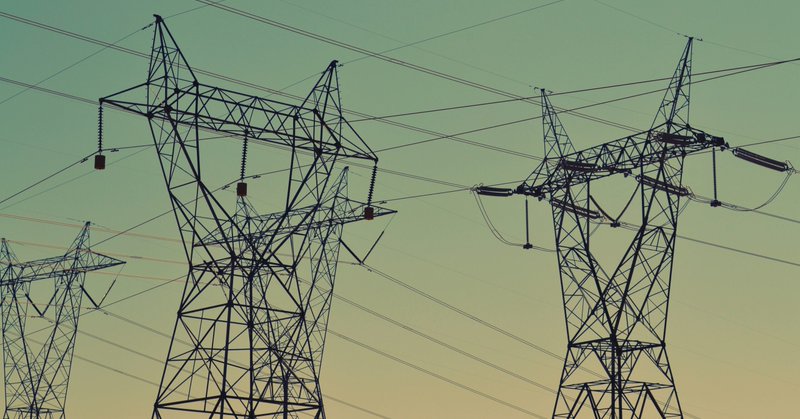
Aspen Economic Strategy Group
@AspenEcon
Followers
3K
Following
875
Media
322
Statuses
2K
Providing a bipartisan forum to address preeminent challenges in U.S. economic policy.
Washington DC
Joined October 2019
Charts play a powerful role in telling the story of our economy. Enjoy 12 figures from the AESG that showcase our work in 2024. Happy holidays!
1
2
4
Read @JosephMajkut @CSIS’s complete paper, “An Energy Strategy for National Renewal” here: https://t.co/8zg8yThOl9
economicstrategygroup.org
After two decades of relatively constant energy consumption, the nation faces a surge in power demand driven by artificial intelligence, domestic manufacturing, and continued electrification,...
1
1
4
4. Establish rigorous carbon-accounting standards: As global markets increasingly reward low-carbon production, the United States will need credible emissions accounting to maintain competitiveness. Majkut recommends establishing U.S. standards that can guide investment, enhance
1
0
0
3. Build new natural-gas plants ready for later retrofit with carbon capture and storage equipment: While natural gas will be necessary to meet rising demand, designing plants today with future carbon capture and storage (CCS) in mind is a low-cost hedge that helps prioritize
1
0
0
2. Invest in transmission enhancements: Investing in high-voltage interstate transmission is one of the most strategic long-term steps the federal government can take to strengthen the energy system. Majkut calls for federal funding and authority to accelerate the buildout of a
1
0
0
1. Expand the development and deployment of nuclear energy: Expanding nuclear power would complement solar, storage, and natural gas by providing large-scale, carbon-free baseload generation. Majkut proposes an anchor tenancy model in which the Department of Energy is a
1
0
0
In light of these challenges, Majkut offers a four-part energy strategy: 1. Expand the development and deployment of nuclear energy 2. Invest in transmission enhancements 3. Build new natural-gas plants ready for later retrofit with carbon capture and storage equipment 4.
1
0
0
Majkut suggests that strengthening power generation, transmission, and distribution infrastructure while continuing to reduce emissions, offers a potential solution to these constraints. Majkut points out that climate concerns are aligned with US strategic competitiveness goals
1
0
0
Forecasts for total electricity demand growth between now and 2040 range from 16 to 105 percent. Majkut notes that the existing grid is unable to support the scale of this new power demand. The power sector operates on increasingly thin reserve margins, which creates reliability
1
0
0
Booming investment into AI data centers is primarily driving the projected increase in power demand. Majkut estimates that capital spending in the United States could grow from $125 billion in 2024 to nearly $2 trillion by 2030. But the success of these investments will hinge on
1
0
0
After two decades of relatively constant energy consumption, the United States faces a surge in power demand driven by artificial intelligence, domestic manufacturing, and continued electrification, developments that challenge the nation’s already constrained electric grid. In a
1
1
3
Read @halbennet’s latest Slow Boring article on Keys & Reina’s paper here: https://t.co/PtSmtSGAcC
slowboring.com
Calls for systemic change as cities test creative solutions to housing affordability and supply gaps
0
0
0
Read Benjamin Keys and Vincent Reina’s complete paper, “Improving Housing Affordability,” here: https://t.co/2hK9KdHMFu
economicstrategygroup.org
Housing affordability in the United States has become a major challenge for Americans and a key policy priority for US policymakers. In this paper, Benjamin Keys and Vincent Reina assess the drivers...
1
0
0
4. Ensuring financing is available through the cycle: The federal government can help ensure that the financing exists to construct new housing through, for example, a loan system for multifamily construction that approximates the system in place for single-family lending.
1
0
0
3. Create a stronger housing safety net: Strengthening the housing safety net would ensure affordable shelter during income shocks by expanding evidence-based programs like direct rental assistance and national emergency-rental support to promote greater housing stability.
1
0
0
2. Address barriers to home ownership: The tax code can be reformed to reduce barriers to homeownership by converting the regressive mortgage interest deduction into a targeted first-time homebuyer credit while balancing supply-side incentives to avoid driving up prices. On the
1
0
0
1. Make it easier to build: Policymakers at all levels can make it easier to build by accelerating production, reducing barriers, and incentivizing sensible density through zoning reforms, such as reducing minimum lot sizes and parking requirements, and allowing accessory
1
0
0
Keys and Reina identify challenges to building, barriers to homeownership, a lack of a housing entitlement program, and barriers to financing construction and repairs are all driving the housing affordability challenge. They lay out four key policy proposals to address housing
1
0
0
Homeownership is also less attainable than it was 30 years ago. The ratio of median sales price to median income has increased from 2.4:1 in 1990 to 5:1 in 2023, surpassing the prior high at the peak of the housing boom in the first decade of the 2000s. As a result, the median
1
0
0
Households are spending a higher share of their income on rent than they did in 1980. The share of renters who are “rent burdened,” spending over 30 percent of their income on housing, has risen from 35 to 48 percent. The share of “severely rent-burdened” renters, spending more
1
0
0



